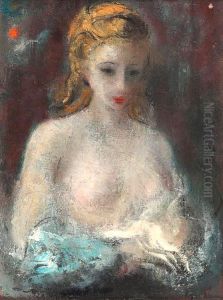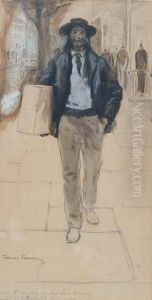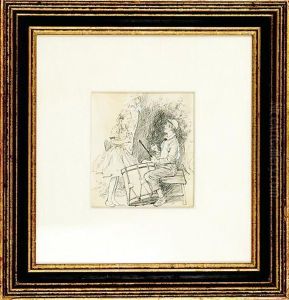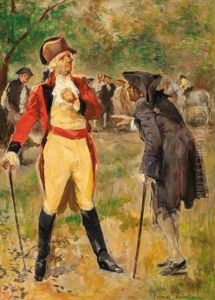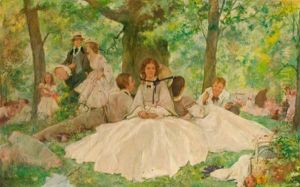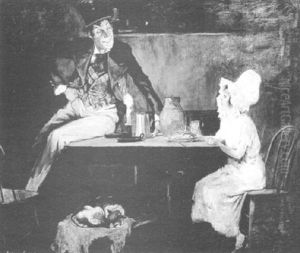Thomas Fogarty Paintings
Thomas Fogarty was an American illustrator and art teacher known for his detailed pen and ink drawings and also for being the mentor to a generation of American illustrators. Born on December 12, 1873, in New York City, Fogarty showed an early interest in art and began his education in the field at a young age. He studied at the New York City National Academy of Design and later at the Art Students League of New York, where he honed his skills in drawing and illustration.
Fogarty's career as an illustrator gained momentum in the late 19th and early 20th centuries, a period often referred to as the Golden Age of American Illustration. He contributed to popular magazines of the time, such as Harper's Weekly, Scribner's, and The Century Magazine. His illustrations often accompanied stories and poems, providing visual narratives that captured the imagination of the reading public.
In addition to his magazine work, Fogarty illustrated numerous books throughout his career. He was known for his attention to detail, his ability to capture the essence of a story, and his skillful use of line. Fogarty's illustrations were typically in black and white, and his style was characterized by the clear and precise delineation of figures and settings.
Fogarty's influence extended beyond his illustration work as he was also a respected educator. In 1915, he joined the faculty of the Art Students League of New York, where he taught for many years. Among his students was Norman Rockwell, who would go on to become one of the most famous American illustrators of the 20th century. Rockwell often spoke highly of Fogarty's guidance and credited him with having a significant impact on his early development as an artist.
Thomas Fogarty's career spanned several decades, and his work remains a testament to the craftsmanship of early American illustration. He passed away on May 27, 1938, leaving behind a legacy as both an artist and teacher that would influence future generations of illustrators.
